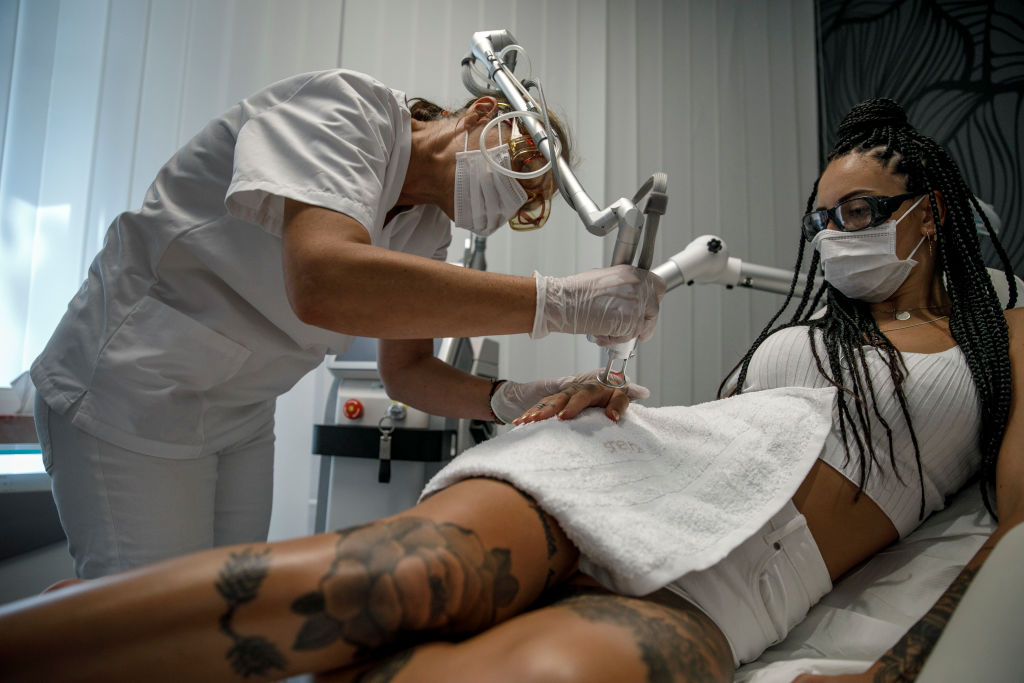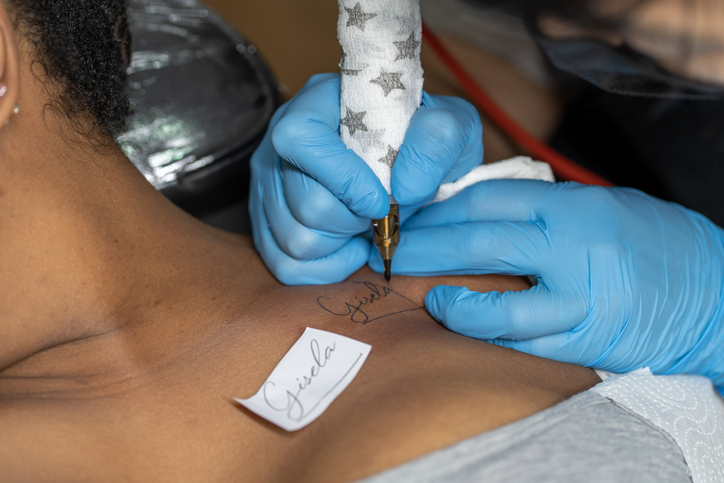
Source: picture alliance / Getty
Tattoos and marriage have one thing in common: they’re eternal commitments that a lot of people make, but may wish to undo at some point.
In some cases, tattoo removal can be more painful and time-consuming than a quickie divorce. However, the images one gets inked into their flesh during one phase of their life might not resonate with them years later. That was the case for Angela White (formerly known as Blac Chyna). The born-again Christian has been removing all things she sees as negative from her body, including lip fillers, implants and most recently, a tattoo. The Internet personality recently posted a video of herself getting her tattoo removed. The tattoo depicted a Baphomet – a demonic figure she had inked onto her left hip in 2021.
Tattoo removal can be a long, costly and uncomfortable process. For melanin-skinned patients, the process can be more complicated. But for those who no longer feel a connection to their tattoos, it can be worth it. Here’s what to know about tattoo removal in Black folks.
What You Need To Know About Tattoo Removal On Brown Skin

Source: DoloresGiraldez / Getty
Traditional tattoo removal uses lasers, which are high-energy light beams that destroy pigment deposits beneath the skin’s surface. However, when it comes to tattoo removal on darker skin, many of these laser systems are unable to differentiate between the unwanted pigment (the ink) and the wanted pigment (the patient’s natural skin color). For this reason, hypopigmentation is a risk when darker-skinned folks get tattoos removed. As a result, some Black folks who get tattoos removed wind up with white patches on their skin – or even white outlines of the image they had removed.
Tattoo removal clinics will evaluate a patient’s skin based on the Fitzpatrick scale, which measures the amount of melanin in a person’s skin. The scale ranges from one through six, with one being the lightest and six being the darkest. Types one through three respond well to most types of lasers. However, when treating skin types four through six, tattoo removal specialists must take extra care. The higher amount of melanin in the skin, the faster the heat of the laser gets absorbed. Putting the laser on too high of a setting or using it for too long can result in the aforementioned hypopigmentation. It can also result in blisters, a slower healing process and even the risk of infection.









